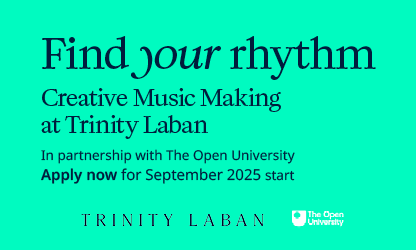Homo Sum-ming up
Since being paired with Croydon Bach Choir in September 2016, I have worked with the choir on numerous occasions, gradually feeding material from my new choral work. Homo Sum was conceived as a celebration of multiculturalism, reflecting both the diversity of Croydon and the Croydon Bach Choir for whom the piece was commissioned, in addition to reflecting the cosmopolitan city of London and the UK in general.
Across the eight movements comprising Homo Sum, some of the references to multiculturalism are very direct, such as the use of nine different languages. There are also more more subtle allusions to different cultures and traditions, through varied use of rhythm, texture and harmony.
Croydon Bach Choir are a very capable ensemble who rehearse once a week for two hours under the direction of the energetic and witty Tim Horton and their superb accompanist William Munks. When I initially went to their rehearsal, my aim was to gain a sense of what the choir sounded like, both collectively and by vocal section. I was also interested in how they rehearsed, their approaches to learning unfamiliar repertoire and what repertoire members of the ensemble most enjoyed singing. Being taken out for pizza and beers by choir members certainly aided these initial discussions!
For my second rehearsal with the choir, I took with me a simple chorale called Homo Sum for the choir to sight-read, with the hope of gaining a deeper understanding of the ensembles’ sound. I was really impressed by how quickly the slow movement came together and Homo Sum became the opening movement of my new work for Croydon Bach Choir.
From the outset, I always intended to write a multi-movement work, hoping that this would enable me to drip-feed movements to the choir as I wrote them, making revisions where necessary without compromising the overall shape and structure of my piece. This method of working proved invaluable, as I was able to send work and receive recordings of rehearsals which helped to inform subsequent composing decisions.
Whilst the choir generally perform well-known, traditional repertoire, I wanted to ensure that my new piece would allow them to experience unfamiliar musical techniques and structures. Several movements from within Homo Sum aim to do this.
For example, the work sets nine different languages, and whilst most choir members will have experience of singing in German, Italian and Latin, how many could say they had sung in Dutch, Spanish, Welsh or Swahili? The movement ‘Different Flowers’ has an aleatoric and flexible structure, in that each vocal part (soprano, alto, tenor and bass) is given six contrasting melodic lines. Each individual vocalist makes an independent decision as to when to sing, which melodic line to perform and when to vary the material they sing.
As a result, the movement gives the choir responsibility for the melodic, harmonic, rhythmic, structural and textural development of the movement which changes with every performance. The penultimate movement ‘Epilogue’ starts of as a simple canon, but turns into a wildly energetic riff-based texture with more in common with Drum and Bass than Western classical choral repertoire.
Once of the biggest challenges on the project has been gaining permission from publishing companies and authors to set their text. Not only has this been very time consuming, but in a couple of instances, permission has been declined as performing poets have wanted to protect the rights to their own work.
With the vocal score and reduction now complete and rehearsals well under way, my remaining task is to orchestrate the score for strings and percussion ahead of the July premiere.



